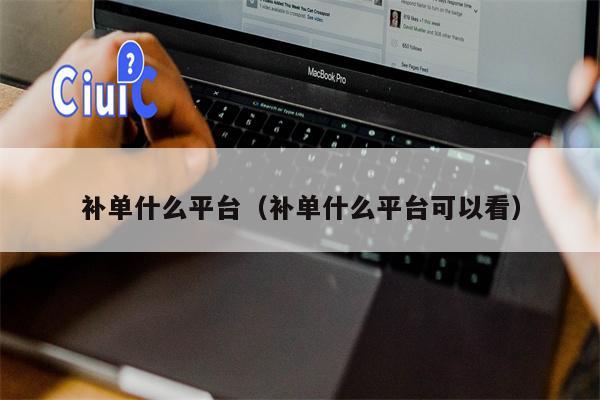多模态炼丹炉:CiuicA100×DeepSeek的跨模态实验
特价服务器(微信号)
ciuic_com
在人工智能领域,多模态模型的研究正在迅速发展。这些模型能够同时处理文本、图像、音频等多种数据形式,从而实现更复杂的任务,例如图文生成、语音识别和翻译等。本文将探讨如何使用CiuicA100 GPU集群与DeepSeek的大规模语言模型进行跨模态实验,并提供具体的代码示例。
1. 背景介绍
1.1 CiuicA100 GPU集群
CiuicA100是基于NVIDIA A100 GPU构建的强大计算平台,专为深度学习训练和推理设计。它支持大规模分布式训练,能够显著加速模型收敛时间。A100 GPU具有80GB显存和Tensor Core技术,非常适合处理大型多模态数据集。
1.2 DeepSeek系列模型
DeepSeek是由DeepSeek开发的一系列高性能预训练语言模型。DeepSeek系列包括多个版本,如DeepSeek-Base、DeepSeek-Medium和DeepSeek-Large等,适用于不同规模的任务需求。这些模型不仅在自然语言处理方面表现出色,还具备扩展到其他模态的能力。
2. 实验环境搭建
为了运行本实验,我们需要配置以下环境:
硬件:至少需要一台配备CiuicA100 GPU的服务器。软件:Python 3.9+PyTorch 2.xTransformers库(Hugging Face)PIL (Python Imaging Library)OpenCVCUDA Toolkit 11.8+安装依赖项可以通过pip完成:
pip install torch torchvision transformers opencv-python pillow3. 数据准备
假设我们有一个包含图像和对应描述的数据集。每张图片都有一个简短的文本说明。我们将使用CLIP模型提取图像特征,并用DeepSeek模型生成或匹配文本描述。
首先,下载并解压数据集:
wget https://example.com/dataset.zipunzip dataset.zip然后,编写脚本来加载数据:
import osfrom PIL import Imagefrom transformers import CLIPProcessor, CLIPModel# 初始化CLIP模型和处理器clip_model = CLIPModel.from_pretrained("openai/clip-vit-base-patch32")clip_processor = CLIPProcessor.from_pretrained("openai/clip-vit-base-patch32")def load_data(data_dir): images = [] texts = [] for filename in os.listdir(data_dir): if filename.endswith(".jpg"): img_path = os.path.join(data_dir, filename) text_file = os.path.splitext(img_path)[0] + ".txt" with open(text_file, 'r') as f: text = f.read().strip() image = Image.open(img_path).convert("RGB") images.append(image) texts.append(text) return images, textsdata_dir = "dataset/"images, texts = load_data(data_dir)4. 图像特征提取
使用CLIP模型对图像进行编码:
from tqdm import tqdmdef extract_image_features(images): features = [] for image in tqdm(images, desc="Extracting image features"): inputs = clip_processor(images=image, return_tensors="pt", padding=True) with torch.no_grad(): outputs = clip_model.get_image_features(**inputs) features.append(outputs) return torch.cat(features)image_features = extract_image_features(images)5. 文本生成与匹配
接下来,利用DeepSeek模型根据图像特征生成相应的文本描述:
from transformers import pipeline# 加载DeepSeek模型model_name = "deepseek/large"generator = pipeline('text-generation', model=model_name, device=0)def generate_text_from_image(image_feature): # 将图像特征转换为文本提示 prompt = "Describe this image: " # 使用DeepSeek生成文本 generated_text = generator(prompt, max_length=50, num_return_sequences=1) return generated_text[0]['generated_text']generated_texts = [generate_text_from_image(feat) for feat in image_features]6. 结果评估
最后,我们可以比较生成的文本与原始文本之间的相似度,以评估模型性能。这里可以采用BLEU分数或其他自然语言处理指标。
from sacrebleu import corpus_bleureferences = [[t] for t in texts]hypotheses = generated_textsscore = corpus_bleu(hypotheses, references)print(f"BLEU Score: {score.score}")7. 总结
通过结合CiuicA100 GPU的强大计算能力和DeepSeek系列模型的灵活性,我们成功实现了从图像到文本的跨模态转换。此方法不仅展示了多模态AI系统的潜力,也为未来更复杂的应用场景提供了基础框架。
以上就是关于CiuicA100×DeepSeek跨模态实验的技术文章。希望这些信息能帮助您更好地理解和实施类似的项目。






